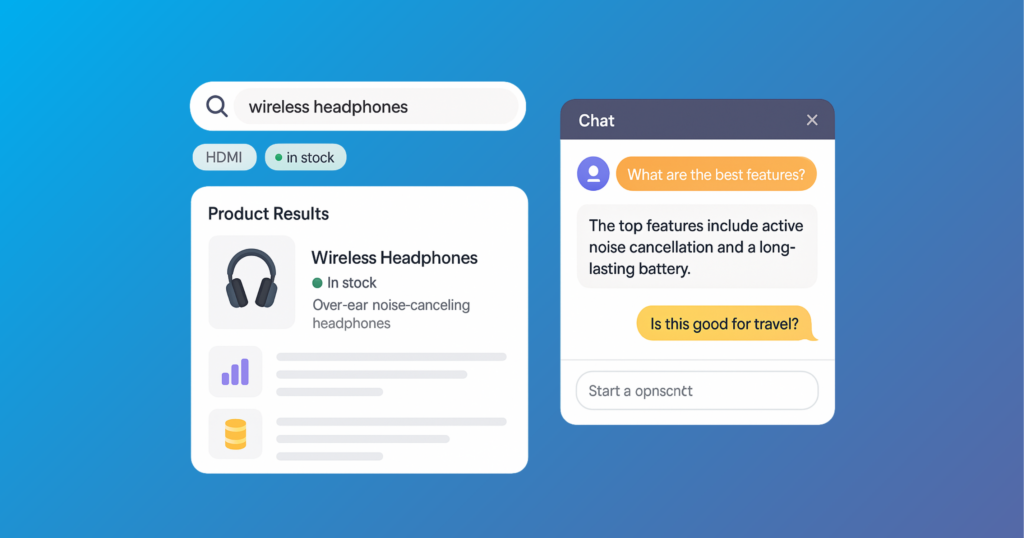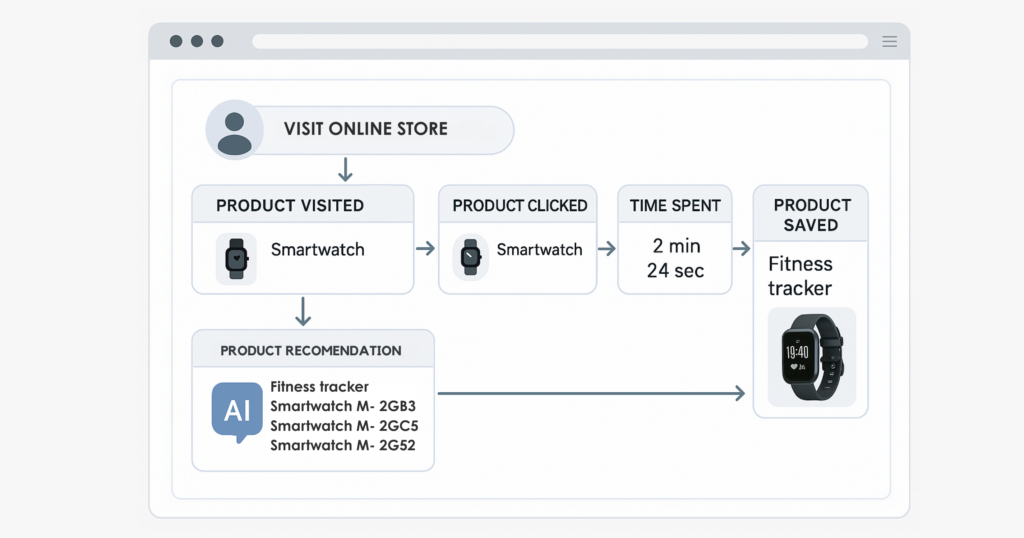In the era of brick-and-mortar business, product discovery was simple. Buyers relied on printed catalogs and knowledgeable sales representatives. These reps could interpret vague descriptions and quickly match them with the right products. There was no need for perfect terminology. A customer could describe a goal, and the salesperson would do the rest. As commerce moved online, that human guidance largely disappeared. Digital platforms offer scale and accessibility but also introduce friction. Customers are now left to navigate vast, complex product catalogs on their own.
Today’s B2B catalogs are living ecosystems. Descriptions, specifications, pricing, and availability change frequently. Many products come with layers of customization. Size, features, and compatibility requirements add to the complexity. Buyers span industries, regions, and roles, each using different terminology. Add globalization, language differences, and omnichannel expectations, and product discovery becomes a real challenge. Even small search variations can derail the journey. A Zoovu report found only 52% of brands returned relevant results for queries with synonyms or slight wording changes. This lack of adaptability leads to frustration and lost sales. To fix this, companies are turning to digital product discovery platforms. These AI-powered tools guide users through complexity and help them find what they need, even without the exact product name.

A digital product discovery platform enhances the e-commerce experience for both B2B and B2C companies. It simplifies how customers find and select products. Acting as an AI-powered assistant, it personalizes the journey by bridging the gap between structured product data and natural language. Unlike basic search engines or recommendation tools, these platforms offer guided selling, product finders, needs-based filtering, and conversational AI.
What makes them unique is their ability to handle vague or informal terms. They support users with different levels of technical knowledge. A user might search for “camera gear for outdoor filming” and see no results. Later, they try “outdoor camera gear” and get a full list. This disconnect shows how product discovery platforms improve relevancy by understanding intent. They deliver precise results regardless of how the query is phrased. Businesses using these tools can boost discoverability, reduce frustration, and increase conversion rates.

B2B eCommerce is accelerating, and by 2028 it’s expected to represent 27.5% of electronic sales and 14.3% of total B2B product purchases. Sales through eCommerce sites are expected to climb to $3.027 trillion, reflecting strong year-over-year growth through the next several years. This growth depends heavily on buyer expectations and the quality of the digital experience.
Yet, many businesses are struggling to keep up. A 2024 Forrester survey shows that poor data quality remains a barrier. Inconsistent, incomplete, or unstructured data makes it hard to deliver the experience B2B buyers expect. Even top eCommerce platforms can fall short when product discovery fails.
The impact is significant. 86% of B2B purchases stall during the buying process. 81% of buyers are unhappy with the vendors they choose. That’s a problem, considering how much effort buyers invest in research. Decision fatigue is growing. Buyers spend hours searching or reach out for help. Some just abandon their purchase. And even when purchases go through, 87% of buyers say the products don’t fully meet their expectations, pointing to a deeper issue in discovery and decision-making.
Picture a company shopping for specialized computer hardware. Technical specs and compatibility details quickly become overwhelming. Platforms like Zoovu, Algolia, Constructor, and Klevu solve this problem. They guide buyers based on their needs and suggest the right options. They reduce friction and help users make confident decisions.
Today’s B2B buyers also expect digital experiences that mirror B2C: fast, user-friendly, and self-service. This makes intuitive product discovery tools not just a nice-to-have but a critical part of any successful B2B Product Discovery strategy.


Today’s B2B buyers prefer self-guided journeys. 75% of B2B buyers say they want to purchase without talking to a rep. But while self-service experiences are gaining traction, they often lead to purchase regret when the tools in place can’t fully support buyer needs.
Digital product discovery platforms play a critical role here. They empower buyers to confidently navigate complex catalogs and make informed decisions, reducing the likelihood of poor-fit purchases and driving measurable business outcomes:
These platforms do more than improve the shopping experience. They enhance sales performance and drive growth. Businesses that invest in B2B product discovery tools improve conversions, scale smarter, and deliver better customer outcomes.
Helping customers find the right product quickly is a growing challenge for businesses with large or complex catalogs. AI-powered product discovery platforms are stepping in to simplify this process—improving both the user experience and business performance.
A strong example of how discovery tools can improve the buying experience is Damstahl, a stainless steel wholesaler with a catalog of over 18,000 SKUs. Finding the right fittings was often slow and frustrating for customers unfamiliar with exact item numbers. After integrating Algolia, Damstahl introduced smarter, personalized search across nine markets. The result: faster ordering, better customer satisfaction, and sales reps processing orders 60% more efficiently.
Bosch Power Tools faced a similar issue with its extensive portfolio of tools and accessories. To help customers match products to specific DIY or professional tasks, Bosch used Zoovu to translate complex specs into user-friendly language. With AI-powered guidance deployed in 36+ countries, Bosch made it easier for buyers to discover the right tools quickly—strengthening loyalty and simplifying the path to purchase.
At Monrovia, a B2B plant wholesaler, vague searches and spelling issues made it difficult for customers to find the right plants from a catalog of 4,000+ varieties. By implementing Klevu, they saw a 50% boost in search usage and fewer “no results” queries, while also surfacing valuable search insights for their retail partners.
Meanwhile, Lenovo, operating in over 180 markets and 60+ languages, replaced its outdated search engine with Lucidworks Fusion to support a vast, frequently updated catalog. Fusion’s AI-powered search enabled regional personalization and behavior-driven results. Since launch, Lenovo saw a 95% increase in revenue from search and a 55% improvement in search relevancy.
These companies show how product discovery platforms can turn frustrating search experiences into seamless journeys—driving engagement, conversions, and long-term growth.

Creating a seamless product discovery experience is a strategic imperative. As buyer expectations evolve, the ability to guide users efficiently through complex catalogs can directly influence satisfaction, loyalty, and bottom-line results. The brands leading this shift aren’t just solving search challenges; they’re setting new standards for customer-centric commerce. Whether your business is expanding across markets or aiming to reduce friction in the buying journey, the right discovery platform can be a catalyst for smarter, more scalable growth. If you’re evaluating how to improve your digital commerce experience, our team is here to offer insights and guidance tailored to your goals. Feel free to reach out—we’re always happy to connect and explore what’s possible together.
Get monthly insights, case studies, and bold ideas from the front line of digital commerce & CX.